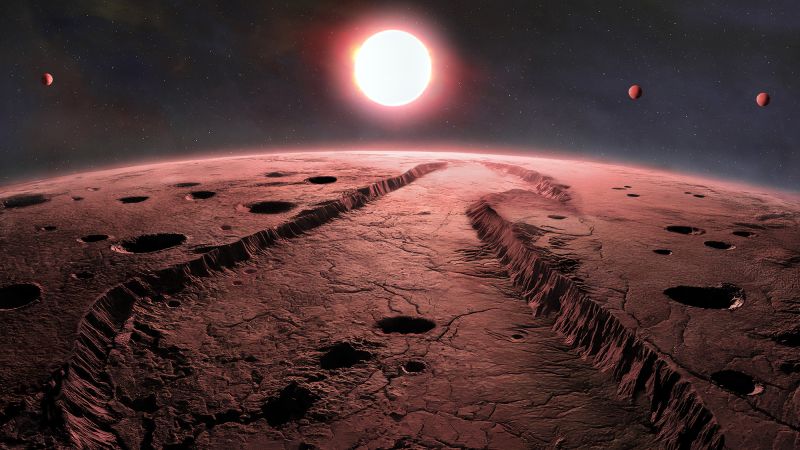After years of extensive observations and painstaking analysis, astronomers have made a remarkable discovery regarding Barnard’s Star, the closest single star system to our planet. New research has revealed compelling evidence for the existence of four exoplanets orbiting this intriguing red dwarf star, categorizing them as sub-Earths due to their masses being approximately 19% to 34% that of Earth. This groundbreaking finding opens up new avenues for understanding what lies beyond our solar system.
The research was spearheaded by Ritvik Basant, a doctoral candidate in astronomy and astrophysics at the University of Chicago. Basant expressed his excitement, stating, “It’s a really exciting find — Barnard’s Star is our cosmic neighbor, and yet we know so little about it.” His sentiment underscores the importance of this discovery, especially considering the precision of contemporary instruments that have significantly advanced over previous generations.
Originally discovered by American astronomer E.E. Barnard in 1916, Barnard’s Star is a low-mass red dwarf, one of the predominant star types in the universe. Over the last decade, astronomers have increasingly found that many of these stars host multiple rocky planets. This observation prompted the deployment of cutting-edge technology, such as MAROON-X, a sophisticated instrument placed on the Gemini North telescope in Hawaii. MAROON-X employs the radial velocity technique to detect exoplanets by monitoring the subtle movements of stars, helping scientists infer the gravitational influence of orbiting planets.
Through the utilization of MAROON-X, researchers have identified the least massive exoplanet recorded to date. The researchers believe that this breakthrough could pave the way for the discovery of more sub-Earth-sized exoplanets throughout the cosmos, enhancing our understanding of planetary formation and the potential for habitability in similar environments.
Details of this plenteous discovery were shared in a study published in The Astrophysical Journal Letters on March 11. Basant described the newly discovered planets as being more akin to Mars in terms of size and composition, noting that their orbits are significantly tighter than those of the planets in our solar system. In fact, all four planets orbit Barnard’s Star in a matter of days, with the outermost taking less than seven days to complete its orbit and the innermost doing it in under three days. This rapid pacing starkly contrasts with Earth’s lengthy orbital journey around the Sun.
Despite their intriguing characteristics, these planets are located too close to Barnard’s Star, resulting in surface temperatures that render them uninhabitable. They lie outside the “habitable zone,” the ideal distance where liquid water could exist stably on a planetary surface. Edward Guinan, a professor of astrophysics at Villanova University, remarked on the star’s impact on these small planets during its more active phase, suggesting that high levels of radiation and stellar activity have likely stripped the planets of atmospheres and essential elements such as water.
The efforts of researchers to find planets around Barnard’s Star date back decades, with many previous attempts yielding unconfirmed results that were later deemed false positives. This latest discovery signifies a crucial leap forward, particularly in the search for Earth-like planets around Sun-like stars, according to Basant.
Co-author Jacob Bean expressed the importance of the find, saying, “A lot of what we do can be incremental, and it’s sometimes hard to see the bigger picture. But we found something that humanity will hopefully know forever.” This highlights the significance of their findings, suggesting that they may illuminate paths for future exploration.
While Proxima Centauri holds the title of the closest system to our solar system at a distance of 4.25 light-years, Barnard’s Star remains notable for being the nearest single star system. With this discovery, astronomers can now confidently assert that planets orbit the two nearest star systems to ours.
The recent findings are built on extensive observations spanning over three years, where researchers collected data across 112 nights. They discovered three planets, two of which had been previously hypothesized based on earlier studies. The collaboration between different research teams, involving the ESPRESSO instrument on the Very Large Telescope in Chile, confirmed the existence of a fourth exoplanet, enhancing the validity of their conclusions.
In summary, the newfound planets around Barnard’s Star, described as genuine discoveries after multiple previous false alarms, mark a significant advancement in the quest to identify and understand exoplanets. The findings embody a hopeful triumph for researchers, charting a path toward further exploration and insight into the cosmos.












